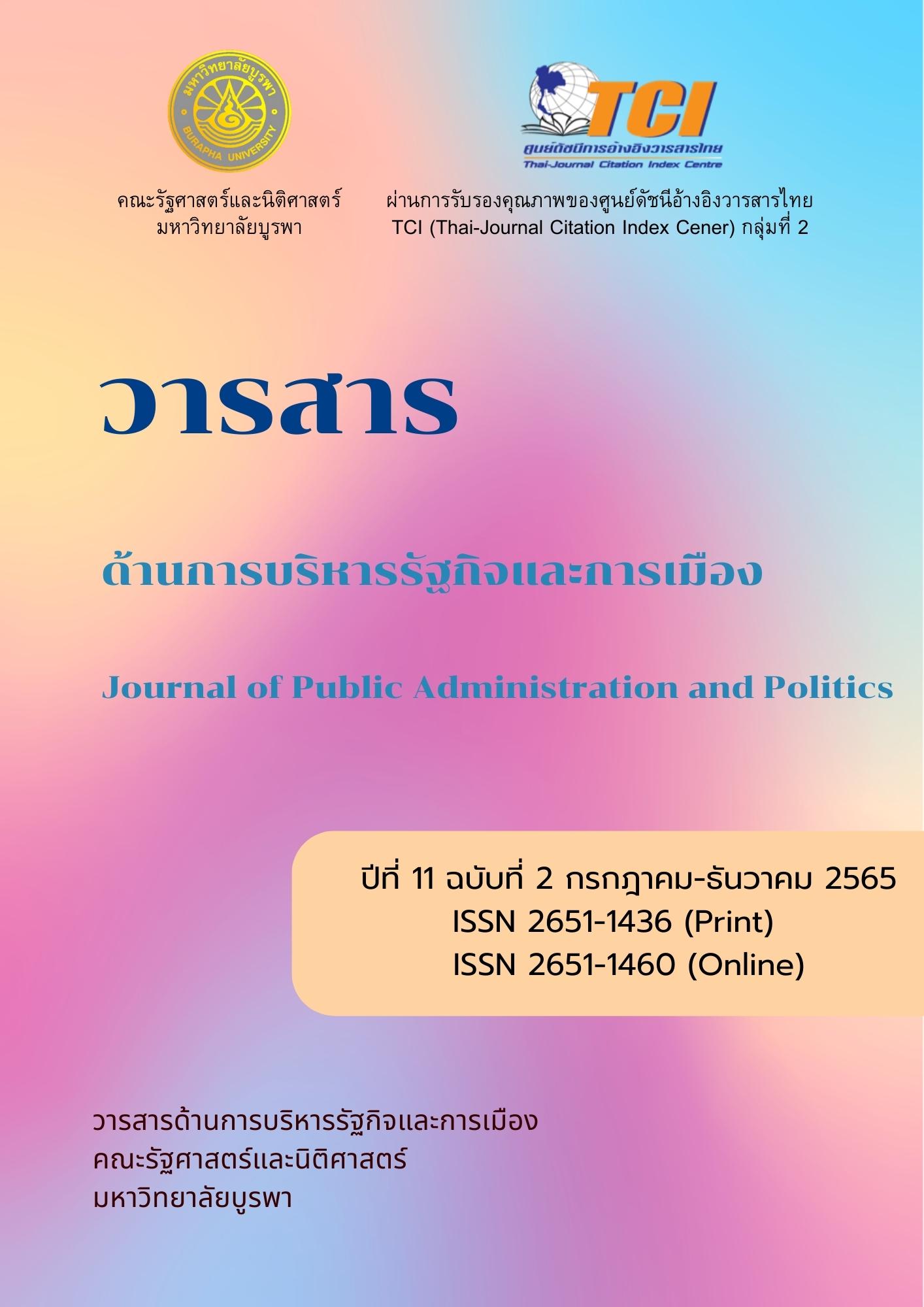แนวทางการยกระดับศักยภาพของประชาชนในการป้องกันภัยจากข่าวลวง
Main Article Content
บทคัดย่อ
งานวิจัยนี้ มุ่งเน้นเพื่อแสวงหาแนวทางในการยกระดับศักยภาพของประชาชนในการจัดการกับปัญหาข่าวลวง โดย ผลจากการวิเคราะห์ข้อมูลกลุ่มตัวอย่าง 408 คน จาก ประชาชนในพื้นที่กรุงเทพมหานครชั้นนอก กรุงเทพมหานครชั้นกลาง และ กรุงเทพมหานครชั้นใน ด้วยตัวแบบเชิงเส้นตรง Ordinary Least Squares (OLS) พบว่า ตัวแปรอิสระที่มีความสำคัญในระดับนัยสำคัญต่อการยกระดับศักยภาพของประชาชน
ประกอบไปด้วย (i) ความร่วมมือของภาคส่วนต่าง ๆ อาทิ ภาครัฐ ภาคเอกชน ภาคประชาสังคม และ อื่น ๆ (ii) การสร้างชุมชนความร่วมมือ
ในระดับย่อยในการร่วมกันป้องกันภัยจากข่าวลวง (iii) พัฒนาวิชาเรียน และ/หรือ หลักสูตรการเรียนการสอน โดยเฉพาะอย่างยิ่งควรเริ่มอย่าง
ช้าที่สุดคือ ระดับมัธยมศึกษา โดยหากเปรียบเทียบระดับความสำคัญของตัวแปรอิสระที่ส่งผลต่อตัวแปรตามคือ ระดับศักยภาพในการจัดการกับปัญหาข่าวลวงแล้ว พบว่า ค่า Standardized Beta Coefficient ระบุว่า การสร้างความเข้มแข็งให้กับชุมชนในการร่วมมือกันป้องกันภัยจาก
ข่าวลวงมีความสำคัญที่สุด เมื่อเปรียบเทียบกับตัวแปรอิสระอื่น ๆ ในสมการ OLS ที่ได้ประมวลผลข้อมูลในงานวิจัยนี้
คำสำคัญ : ข่าวลวง การจัดการ ภาครัฐ ภาคเอกชน ประชาชน
Article Details
เอกสารอ้างอิง
ภาษาไทย
สำนักงานพัฒนารัฐบาลดิจิทัล (องค์การมหาชน) (สพร.). 2563. AI Government Framework : กรอบการ ทำงานปัญญาประดิษฐ์ภาครัฐ.
https://dgti.dga.or.th/e-books-ai-government-framework/
ภาษาอังกฤษ
Alcott, H., & Gentzkow, M. (2017). Social media and fake news in the 2016 election. Journal of Economic Perspectives, 31(2),
-236. Doe: 10.1257/jep.31.2.211
Chang. C. (2021). Fake News: Audience Perceptions and Concerted Coping Strategies. Digital Journalism. 9(5), 636 – 659.
https://doi.org/10.1080/21670811.2021.1923403
Hopp, T. (2022). Fake news self-efficacy, fake news identification, and content sharing on Facebook. Journal of Information
Technology & Politics, 19(2), 229 – 252. https://doi.org/10.1080/19331681.2021.1962778
Meel, P. & Vishwakarma, D.K. (2020). Fake news, rumor, information pollution in social media and web : A contemporary
survey of state-of-the-arts, challenges and opportunities. Expert Systems With Applications, 153, 1 – 26.
https://doi.org/10.1016/j.eswa.2019.112986
Giselle Rampersad & Turki Althiyabi (2020) Fake news : Acceptance by demographics and culture on social media, Journal
of Information Technology & Politics, 17:1, 1-11, DOI: 10.1080/19331681.2019.1686676
Rubin, V.L., Chen, Y. & Conroy, N.K. (2015). Deception detection for news: Three types of fakes. Computer Science. 52(1),
-4. https://doi.org/10.1002/pra2.2015.145052010083
Silva, C.M., Fontes, R.S.& Junior, M.C. (2021). Intelligent Fake News Detection: A Systematic Mapping. Journal of Applied
Security Research. 16(2), 168 – 189. https://doi.org/10.1080/19361610.2020.1761224
Uwalaka, T., Nwala, B. & Chinedu, A.C. (2021). Social media, fake news and fake COVID-19 cure in Nigeria. Journal of African
Media Studies. 13(3), 435 – 449. https://doi.org/10.1386/jams_00058_1.
Van Duyn, E., & Collier, J. (2019). Priming and fake news : The effects of elite discourse on evaluations of news media. Mass
Communication & Society, 22(1), 29-48. Doe: 10.1080/15205436.2018.1511807.
Vasu, N., Ang, B., Teo, T., Jayakumar, M.F. & Ahuja, J. (2018). Fake News : National Security in the Post-Truth Era.
S.Rajaratnam School of


